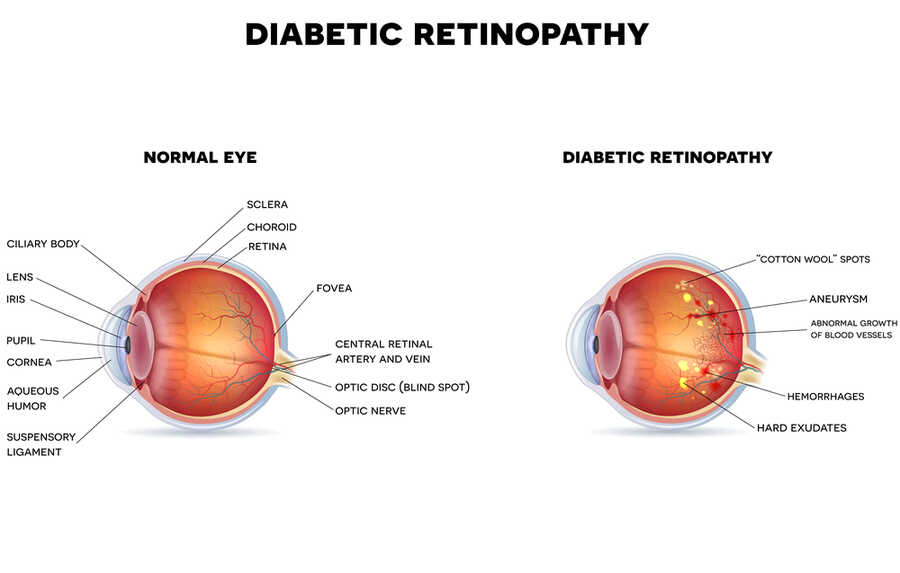
The last American Diabetes Association (ADA) position statement on diabetic retinopathy dated back in 2002, and I think it’s fair to say that an update is long overdue. In their March 2017 issue, the ADA provided an update on the latest recommendations and evidence on this eye complication of diabetes.
What’s new?
What is Diabetic Retinopathy?
Did you know?
Diabetic retinopathy affects 20% of the people with type 2 diabetes at the moment of diagnosis.
Chronic high blood sugar can cause damage to the retina, the “film projector” tissue located at the back of the eyes. Delicate blood vessels nestled in this region can swell up, leak, and even become obstructed. This condition, known as diabetic retinopathy, is one of the top causes of vision loss and affects roughly 40% of the people with diabetes. It is also the culprit behind the explosion of new cases of blindness in more economically developed countries.

Key Facts
- Pregnancy and puberty can speed up the progression of the eye disease
- Cataract does not appear to interfere with the development of diabetic retinopathy
- Severe baseline diagnosis results in poorer vision health outcome
- The duration of diabetes is tightly associated with the risk of diabetic retinopathy
- Several studies showed that an intensive lifestyle therapy did not ward off the disease, but does delay its spurt and progression. The good news is that early diagnosis and treatment stave off vision loss in 98% of the cases caused by diabetic retinopathy.
- Aspirin is not contraindicated in the presence of diabetic retinopathy
How to Prevent
- Maintain glycemia within normal range
- Achieve optimal blood pressure and serum lipid values
- Regular diabetic retinopathy screening
- Manage diabetes by eating healthy meals and exercising regularly
- Avoid smoking
The new statement was published in Diabetes Care on February 21, 2017. To read the full article, click here.
